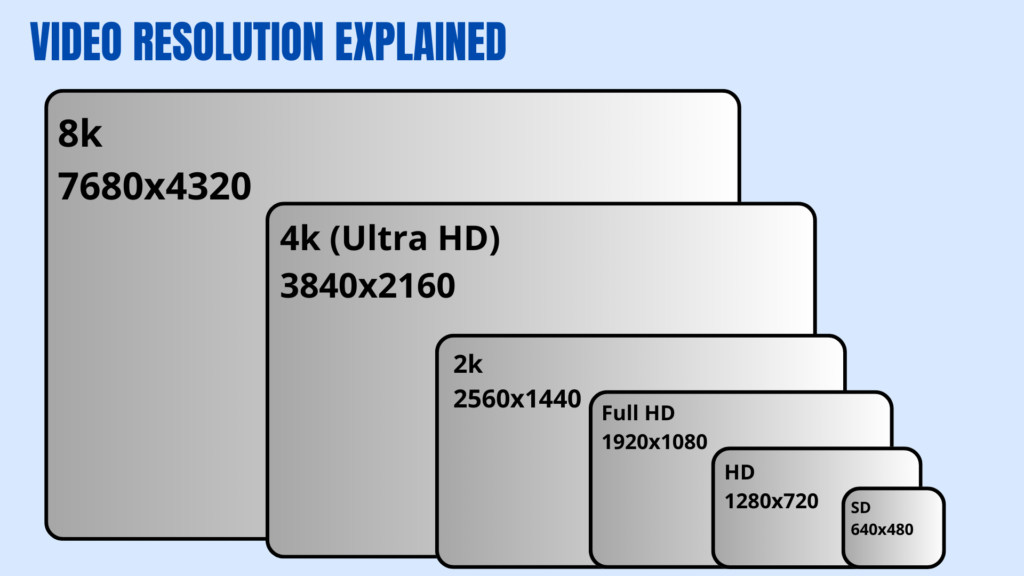Are you wondering just How Much Data Storage Does YouTube Use?
Well, here’s the answer: YouTube uses about 100 petabytes of data storage. That’s the same as 100,000,000 gigabytes!
Well, the platform uploads 720,000 hours of new clips daily. This article will explain the huge YouTube Storage Capacity required to handle such volume.
Get ready for some eye-opening facts! I think it will surprise you. Keep reading.
Table of Contents
Key Takeaways – YouTube Storage Capacity
- YouTube stores about 100 petabytes of data, equal to 100,000,000 gigabytes. This is due to the vast amount of videos uploaded every day.
- The platform uses a mix of hard disk drives and solid-state drives in their data centers around the world. This setup helps manage the huge storage needs and keep videos loading quickly for viewers.
- Every minute, creators add 500 hours of video content to YouTube. These can be HD or 4K quality, requiring more space and making compression techniques important to save room without losing video clarity.
- Google’s servers are located globally. This allows fast access to videos no matter where you are. They also use advanced technology to optimize to have the best storage for the growing number of high-quality videos.
- As video resolutions improve and uploads increase, YouTube continuously develops better ways to manage its massive storage requirements through technologies like cloud storage (with some examples of cloud storage platforms including Linode or DigitalOcean) and improved data management strategies.
How Much Data Storage Does Youtube Use?
YouTube Storage Capacity uses about 100 petabytes of data storage. That’s the same as 100,000,000 gigabytes!
That’s a huge amount of data storage. You can learn here how to store large amounts of data.
Every day, people upload hours and hours of video. These videos come in many sizes because of different qualities like HD and 4K.
To keep all this going, YouTube mixes hard disk drives with solid-state drives. This mix helps YouTube store videos well and get them to you fast.
Google keeps quiet about how big their data centers are or how they exactly work. Yet, we know these places are huge and spread around the world. They make sure no matter where you are, you can watch videos quickly.
But why YouTube needs so much space for its videos? Really, How Much Data Storage Does YouTube Use?

Overview of YouTube’s extensive data storage usage
Every minute, you can find 500 hours of new video content making its way to YouTube. This means every single day, the platform gets flooded with an additional 720,000 hours of videos from users around the globe.
With such enormous uploads, Google’s servers work tirelessly to store everything. Even though they keep quiet on exact figures, estimates suggest YouTube’s digital library stretches over 20 petabytes.
Imagine a bookshelf so long it could wrap around Earth many times—that’s how vast YouTube Storage Capacity is.
Storage isn’t cheap either; handling this much data costs a pretty penny. High-definition (HD) and ultra-high definition (4K) videos add more to this bill as they take up more space than standard resolution clips.
Each upload goes through compression algorithms to save room without losing quality—a smart move that helps manage the sheer volume of daily uploads. Picture trying to fit all your clothes into a suitcase by rolling them up tightly; that’s kind of what YouTube does with each video file.
Understanding YouTube Storage Capacity Needs
YouTube needs a lot of room to store all its videos. Think about the tons of movies, songs, and shows it holds. With so many people adding new stuff every day, YouTube uses big buildings full of computers to keep everything safe.
They also make sure videos look good whether you watch in high quality or even super clear 4K. Curious to learn more about How Much Data Storage Does YouTube Use?
Keep reading!
Video content variety and volume
Every minute, creators upload 500 hours of video to YouTube. These videos range from HD quality tutorials to 4K nature documentaries. You’ll find everything on the platform – cooking shows, tech reviews, music videos, and educational content.
This immense variety meets all interests.
In my experience, if you have a verified account, you can upload up to 12 hours of video or files as large as 256 GB. There’s no cap on how much you can share overall. Think about it – new clips every second across different resolutions and topics.
This massive amount of data requires huge storage capacity to ensure users worldwide get instant access to their favorite videos anytime.
User uploads and video resolution
You can often upload videos to YouTube, and these can range from short clips to long movies, up to 12 hours each or 256 GB in size. With a tool like Handbrake, you can make these files smaller before uploading them.
This step saves space but might change how good your video looks.
YouTube faces growing storage demands due to more uploads and the need for higher resolutions, from HD to 4K video quality. Servers around the world work together, making sure everyone gets fast access to these videos.
Each day, roughly 15 new videos are added by a single user within their daily limit — highlighting the platform’s vast intake and output of digital content.

The Scale of YouTube Storage Capacity
How Much Data Storage Does YouTube Use?
Imagine a place so big, filled with endless racks of hard drives that store all the videos you love. YouTube’s storage space is huge—like an ocean of digital memories. They have giant buildings called data centers all over the world just for this.
These places are packed with computers that save and send out videos every second. So, when you hit play, no matter where you are, a video starts streaming without a hitch. Isn’t that amazing?
Server farms and data centers
YouTube relies on a massive network of server farms and data centers around the globe. These places house thousands of servers, both hard disk drives (HDDs) and solid-state drives (SSDs), to store all the video files you love.
Google owns these spaces and has poured a lot of money into making sure they can hold over one exabyte—that’s 1,000,000 terabytes—of data. This setup is crucial for keeping YouTube running smoothly.
You upload a video; it goes straight to these storage hubs, ready for someone across the world to watch in seconds. Behind every play button click is a complex system ensuring your content reaches viewers without delay.
From streaming your favorite HD videos to uploading new content as a creator, it’s all supported by this extensive digital storage infrastructure.
Every second of video uploaded breathes life into YouTube’s vast digital library.
Global servers and cloud storage
YouTube has a huge network of data centers around the world. These places store millions of videos you love to watch. Think of them as giant libraries that keep everything safe and ready for you.
When more people watch a video, YouTube makes sure it’s in many data centers so everyone can see it fast.
They also use cloud storage, which is like an invisible bookshelf in the sky. It holds videos too, but without taking up space on the ground. This mix helps YouTube handle all kinds of storage needs, from your favorite short clips to long movies in super clear quality.
It’s why you hardly ever wait long to laugh at a funny video or learn something new online.

Factors Influencing YouTube’s Storage Requirements
From HD to 4K, the quality of your videos plays a big part in how much space YouTube needs. With smart tricks and math magic, YouTube keeps file sizes small without losing video quality.
Video resolution from HD to 4K
Videos on YouTube range from HD to 4K, affecting how much storage they need. HD videos require less space than 4K ones. Think of it like this: a minute of HD video uses around 45 MB of storage, while the same length in 4K can use up to 375 MB.
This difference matters because you and other content creators upload over 720,000 hours of footage every day.
YouTube manages this by using compression algorithms. These tools shrink file sizes without losing video quality. So, a huge 4K movie that starts out needing lots of gigabytes can end up smaller.
This way, YouTube keeps providing high-quality videos without running out of space.
Compression algorithms and data optimization
Moving from higher video resolutions like HD and 4K, it’s crucial to talk about how YouTube keeps its storage needs in check. It uses compression algorithms — smart tools that make videos smaller without losing too much quality.
Think of these as digital magicians who can shrink videos, making them easier to store and faster to send across the internet. One such free tool you might use is Handbrake. It’s easy and helps YouTube handle massive amounts of data smoothly.
You have more power over your uploads than you realize.
YouTube mixes different types of storage devices, including hard disk drives (HDDs) and solid-state drives (SSDs), to hold all these compressed videos. This approach lets them manage loads of data efficiently.
Google backs this up with heavy investments in server farms and data centers around the world, ensuring that YouTube can store every minute of video uploaded without a hitch. As a user or uploader, knowing about compression gives you an edge – by compressing your video first, you use less bandwidth during upload and make life easier for both yourself and YouTube’s servers.
Storage Management and Future Trends
Managing all those petabytes of cat videos, tutorials, and live streams isn’t easy. YouTube uses smart techniques like compression to make files smaller without losing quality. They also keep improving their systems to handle even more data as videos get sharper and longer.
Keep up with how they’re planning to store the world’s memes and masterclasses in the future!
Data management strategies
YouTube keeps lots of videos. They use smart ways to handle all this data. First, they send new videos to a close data center. This makes things faster and easier for you. YouTube’s computers then move popular videos around the world.
This way, no matter where you are, your video loads quickly.
They use special tricks to make files smaller without losing quality. Think of it like packing a suitcase – YouTube knows how to fit more into less space. This helps store more videos.
Keeping everything running means always looking for better ways to save and organize data.
Next up, let’s talk about what changes are coming in storing so much information.
Trends in storage optimization and technology
After exploring data management strategies, it’s clear that storage optimization and technology are key for handling massive internet traffic from online videos. Companies invest in advanced compression algorithms to make video files smaller without losing much quality.
These techniques allow more videos to fit into the same space. Solid-state drives (SSDs) are another big part of this trend. They work faster than older hard disk drives (HDDs), making it quicker to access and stream videos online.
Cloud storage plays a huge role too. It lets companies keep huge amounts of data on servers all over the world. This way, you can watch videos fast, no matter where you are. As resolutions move up to 4K and beyond, these storage technologies keep everything running smoothly behind the scenes.
So, every time you click on a YouTube video, know there’s a whole system working to bring it to your screen efficiently.

Conclusion – How Much Data Storage Does YouTube Use
Do you want to knowHow Much Data Storage Does YouTube Use? Here’s the quick asnswer for you.
Every day, YouTube uses about 100 petabytes of data storage. That’s the same as 100,000,000 gigabytes.The platform uploads 720,000 hours of new video daily. This requires massive space. YouTube has over one exabyte in its data centers to store videos from around the world.
The complexity doesn’t stop here; YouTube makes sure videos are where they need to be for fast loading times. They spread popular ones across many servers globally.
Think about those numbers – one exabyte equals a million terabytes! Also, consider that each video varies in quality and length, with some reaching up to 12 hours or 256 GB per file for verified accounts.
So next time you watch your favorite video on YouTube, think about the vast infrastructure working behind the scenes. This ensures you get smooth streaming any time of the day, making us wonder even more about what future technologies will allow for YouTube’s ever-growing library.
FAQs – How Much Data Storage Does YouTube Use?
1. How much data does YouTube store?
YouTube stores an immense amount of data, with hundreds of hours of video uploaded every minute. This results in a vast storage need that grows daily.
2. Does video length affect YouTube’s data consumption?
Yes, the longer the video, the more data it consumes. High-definition videos take up more space than standard videos, increasing YouTube’s overall storage requirements.
3. Can online videos really use up a lot of storage?
Absolutely. Online videos vary in quality and length, leading to significant differences in how much storage they require on platforms like YouTube.
4. How does YouTube manage all this data in long-term?
YouTube uses complex systems and technologies to handle its massive data storage needs efficiently, ensuring users have fast access to videos at any time.





